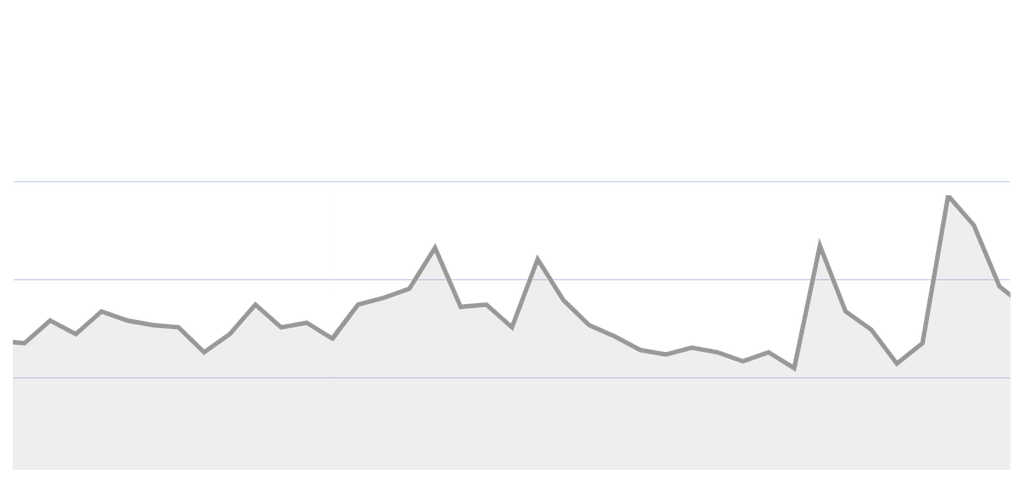What is Loom Network?
The Loom Network token or LOOM is the official currency of the Loom Network. The latter is a blockchain-based Platform-as-a-Service (PaaS) project.
LOOM has several use cases, however, it mainly serves as a medium of exchange on the Loom Network. For instance, it’s used to pay transaction fees of which a share goes to validators.
The Loom Network token is based on the ERC-20 token standard. This means that it can be stored in the majority of digital wallets that support tokens built on the ERC-20 standard.
LOOM token grants access to decentralized applications (dApps) deployed on the Loom Network. However, any decentralized applications (dApps) built on the Loom Network don’t need to implement LOOM to operate.
It also facilitates transactions between the Ethereum blockchain and dAppChains on Loom Network.
Moreover, the LOOM token plays a key role in securing the Loom Network via the Delegated-Proof-of-Stake (DPoS) consensus mechanism. You can read more about this process in the section below.
There is a max cap of 1,000,000,000 LOOM tokens. There is no information about token allocation or distribution that’s publicly available.
There are two ways to acquire LOOM. Firstly, users earn LOOM by interacting with dApps built on the Loom Network. Secondly, users can acquire it via major supported exchanges. You can check our recommended exchanges above.
LOOM is a token that makes it a cryptocurrency. As such, its price tends to fluctuate. In order to keep yourself updated, you can have a look at the Loom Network price history or the current LOOM price on the graph above.
What are the Main Features of Loom Network?
Loom Network is a PaaS solution for developing smart contracts and decentralized applications with a focus on interoperability. It’s powered by Ethereum. Besides Ethereum, Loom Network also supports Bitcoin, BNB Smart Chain, and TRON.
In essence, Loom Network enables developers to build and launch multi-chain dApps without sacrificing scalability.
Moreover, with the help of Loom Network, dApps based on Ethereum Solidity can be run through sidechains. To put it simply, developers themselves can select a consensus mechanism based on their requirements.
Loom Network grants access for developers to access third-party APIs.
As discussed in the What is Loom Network section, the Loom Network mainnet also known as the Loom Basechain operates using the Delegated-Proof-of-Stake (DPoS) consensus mechanism.
There are two roles within this type of consensus mechanism - validators and delegators.
Validators run nodes. In order to be able to do this, they must first stake their LOOM tokens. On the other hand, delegators stake their LOOM tokens towards their selected validator. Delegators only get a share of the validator’s reward.
Loom Basechain has been audited by Trail of Bits. This audit report is publicly available for anyone to review.
Furthermore, Loom Network is secured via the zkLoom protocol which has a smaller number of validators.
Loom Network is powered by Plasma. To put it simply, Plasma functions as a scaling solution. It boosts the transaction speeds on the Loom Network.
One of the primary goals of the project is to provide dApp developers with the kind of smart contracts that use more or less computing power based on the needs of the project. For example, decreasing computing power for testing.
Another goal of Loom Network is to create a smart contract building environment that doesn’t require developers to switch programming languages and still be able to implement all of the functionalities they want to.
Before jumping into the Loom Network project (or any crypto project), make sure to do proper research. In this case, you can start by having a look at the LOOM price on the graph above.
Who Developed Loom Network?
The Loom Network crypto project was launched in late 2018. It was co-founded by a team of entrepreneurs James Martin Duffy, Luke Zhang, and Matthew Campbell.
Besides Loom Network, James Martin Duffy was also part of the founding team at Auragin and KoreaJobFinder. He’s currently juggling the position of CEO at Epicterus Ventures and CMO at Loom Network.
Luke Zhang is a professional web developer with years of experience at companies such as BlockMason, Elemica, Workopolis, and Shifthub.
Matthew Campbell is an experienced entrepreneur who also co-founded Errplane. He’s currently the principal of several tech projects - Loom Network and Hyperwork, Inc. Campbell has worked at a variety of well-established companies such as Bloomberg, Digital Ocean, Thomson Reuters, Tapad, Bertelsmann, Superdeluxe, and Bellsouth.




